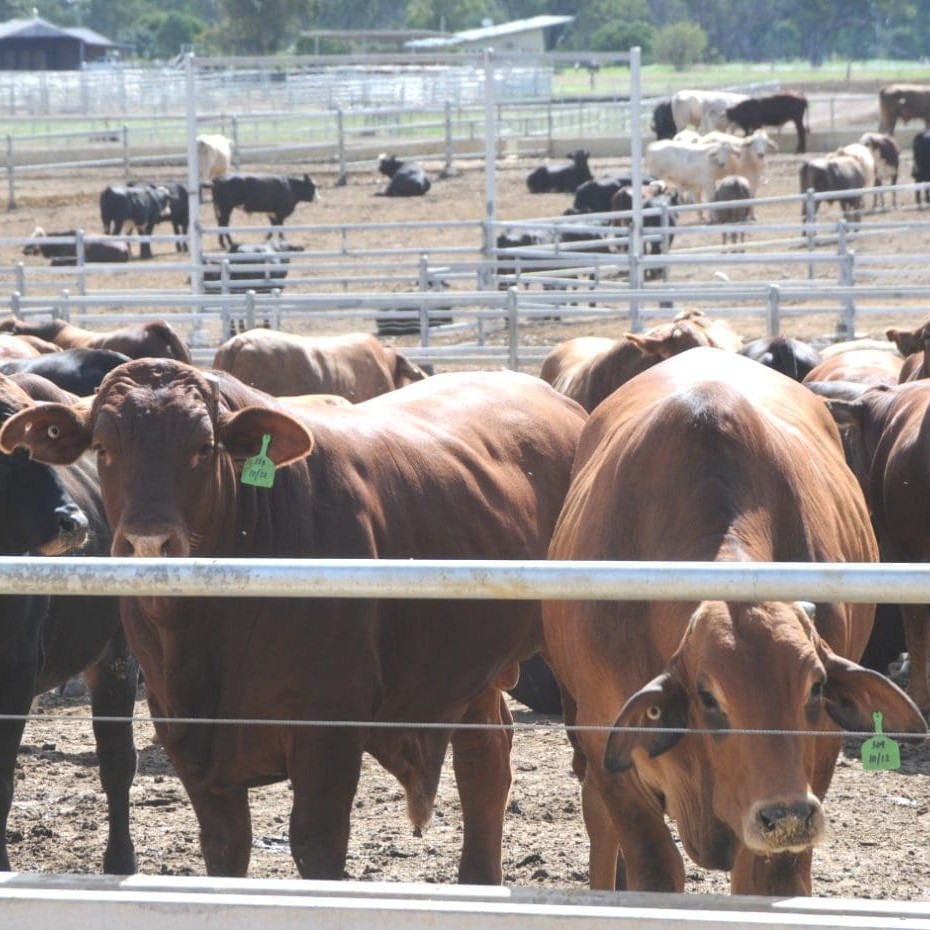 Profit projections on 100-day grainfed cattle continue to look more encouraging, with a positive $11 profit posted in Beef Central’s latest trading budget calculation carried out yesterday.
Profit projections on 100-day grainfed cattle continue to look more encouraging, with a positive $11 profit posted in Beef Central’s latest trading budget calculation carried out yesterday.
That comes on top of a +$10 result three weeks ago, on typical 100-day cattle entering the feedyard yesterday, and closing-out after 105 days on feed in late August. That’s only the third time we have been in positive territory since the regular budgets were launched on Beef Central in May last year.
The result captures the gentle shift in sentiment that is being seen in the marketplace at present with regard to custom-feeding prospects for the back end of the year (see this morning’s separate story, “Has the tide turned for grainfed profitability?”)
We’ve based yesterday’s budget on a 190c/kg buy price, the same as the previous calculation, however there’s evidence in the market of feedlots landing saleyards cattle home for rates in the low 180s, while direct consignment cattle are proving more difficult to attract to market, and consequently are being seen at 185c-190c-plus in places, depending on quality and delivery timeframe.
Significantly, since yesterday’s breakeven was calculated, the Eastern Young Cattle Indicator fell another 5.5c to 364.75c, perilously close to its lowest level in at least the past 18 months. The indicator has now fallen more than 10c in the past seven days, and represents a 28.25c slide since this same calculation was done on April 4, due to the compounding effect of dry weather and the onset of frosts on pasture quality.
Some well-informed market observers suggest there could be some see-sawing effect in saleyards prices in coming weeks, as cattle flows begin to expand and markets adjust.
“Producers who are unfortunate enough to have their cattle in the saleyard one particular week may cop it, where a week either side, prices may be considerably better. That process may last a month or two, but a stretch of dry weather could see prices come under pressure. The market is definitely vulnerable,” a good market source said yesterday.
Pricing yesterday’s P&L budget feeder steer (flatback crossbred, ex-Darling Downs) at 190c values him at $855, a long way from our year-opening, January 9 steer value of $967.
Finished ration price applied in yesterday’s calculation was $240/tonne, the first decline in a while, based on the disappearance of earlier grain bought at higher prices. Current feedgrain prices delivered Darling Downs are sorghum around $165-$175, barley delivered in the low $190s and wheat about $10/t above that.
That produces a slight decline in total feeding cost to $376, down from $383 last time. Similarly the ration price adjustment gives a total production cost yesterday calculated at $1322, an $8 decline on April 19.
Applying these variables to the formula suggests a breakeven figure at 375c/kg dressed weight, down 2c from this same calculation three weeks ago.
Export meatworks forward pricing on 100-day grainfed cattle are currently between 375c/kg and 385c/kg, with variances due to grid prices and specific specs for customers.
While this is definitely stimulating some interest in placing uncommitted cattle on feed, the market is still some way off the 400c forward contracts seen in our January 9 assessment.
Today’s forward slaughter price, applied over our breakeven figure, indicates a trading profit of +$11 a head.
Given that Beef Central last week celebrated its first birthday, we can now start contrasting current trading profit figures with those seen in our May 2011 P&L budgets.
This time last year, we were talking about a breakeven figure of 388c. That was primarily due to higher ration prices, as feeder prices were very similar to today. Profit projection back in mid-May last year was negative-$5, but it rapidly deteriorated after that point.
Spot market profitability
Yesterday’s public processor grids for spot market 100-day grainfed ox among southeast Queensland plants were around 370c for milk and two-tooth cattle. Cattle killed this week, going on feed back in late January and forward-bought by processors in the 370s, are line-ball in profit for processors. That’s a lot better than early April when early January forward-bought cattle for slaughter cost around 400c/kg, meaning losses on those cattle to processors worth about $105 a head. As recently as last week there were still forward-bought cattle being killed at 405c.
Adding to the more bullish mood currently being experienced is the recent performance of the dollar, yesterday falling below parity with the US Greenback for the first time this year.
The last few weeks of short supply has put a little profitability back into processors pockets, which in turn has given them a little more confidence to go out in front to tie-up product.
“It’s much more difficult to do that confidently, as a processor, if you are losing money on the spot market, as processors have done fairly consistently over the past year or more,” a trade source said yesterday.
- Beef Central's regular 100-day grainfed breakeven scenario is based on a representative standard set of production variables, ex Darling Downs. They include a 356kg dressed weight; ADG of 2kg; consumption 15kg and a NFE ratio of 7.5:1 (as fed); $25 freight; typical implant program; interest component. It is important to note that variations exist across production models (feed conversion, daily gain, mortality, morbidity, carcase specification); from feedlot to feedlot; and between mobs of cattle. For a more specific performance forecast on a given mob of cattle, consult with your preferred custom feeder.
